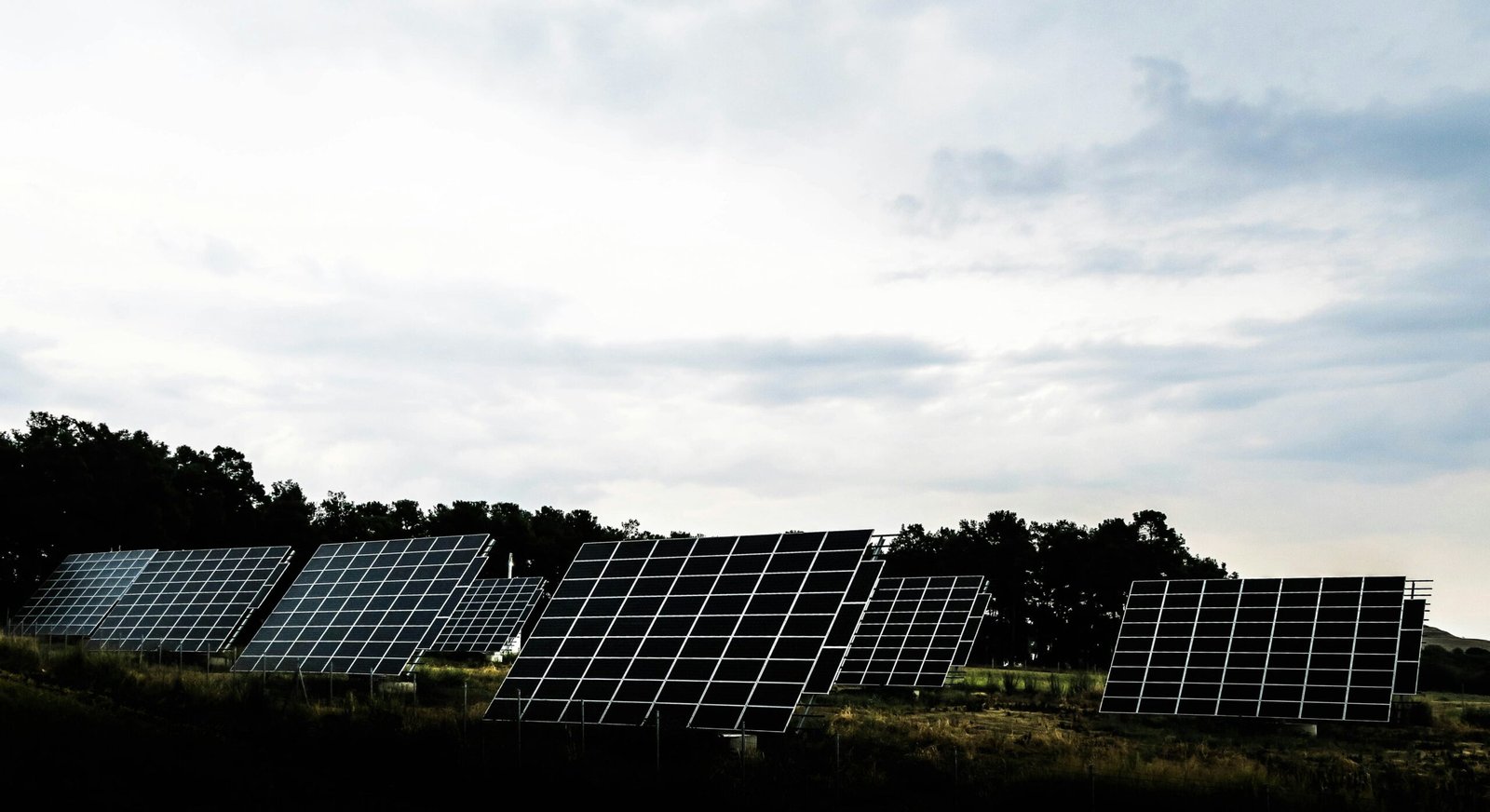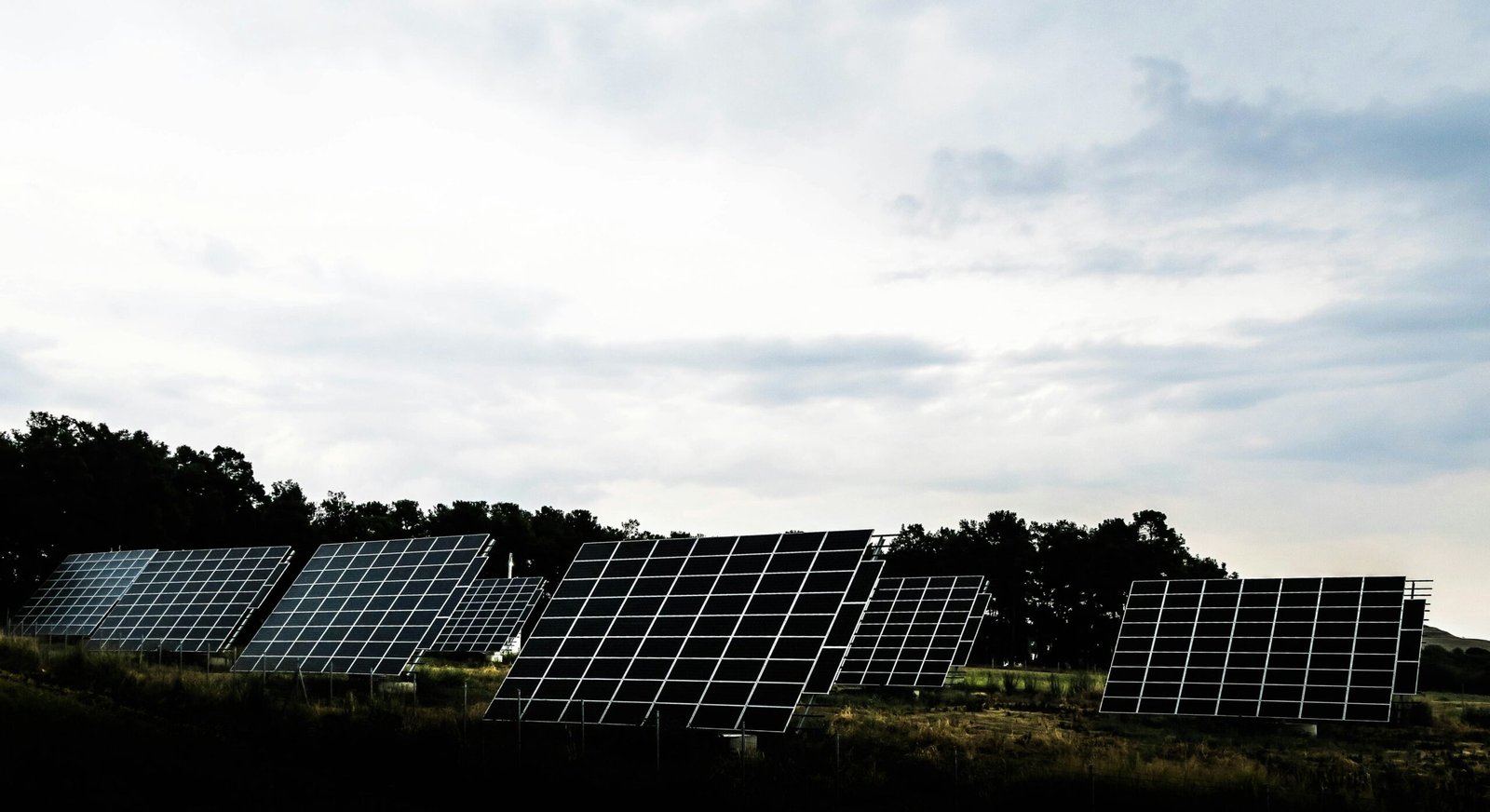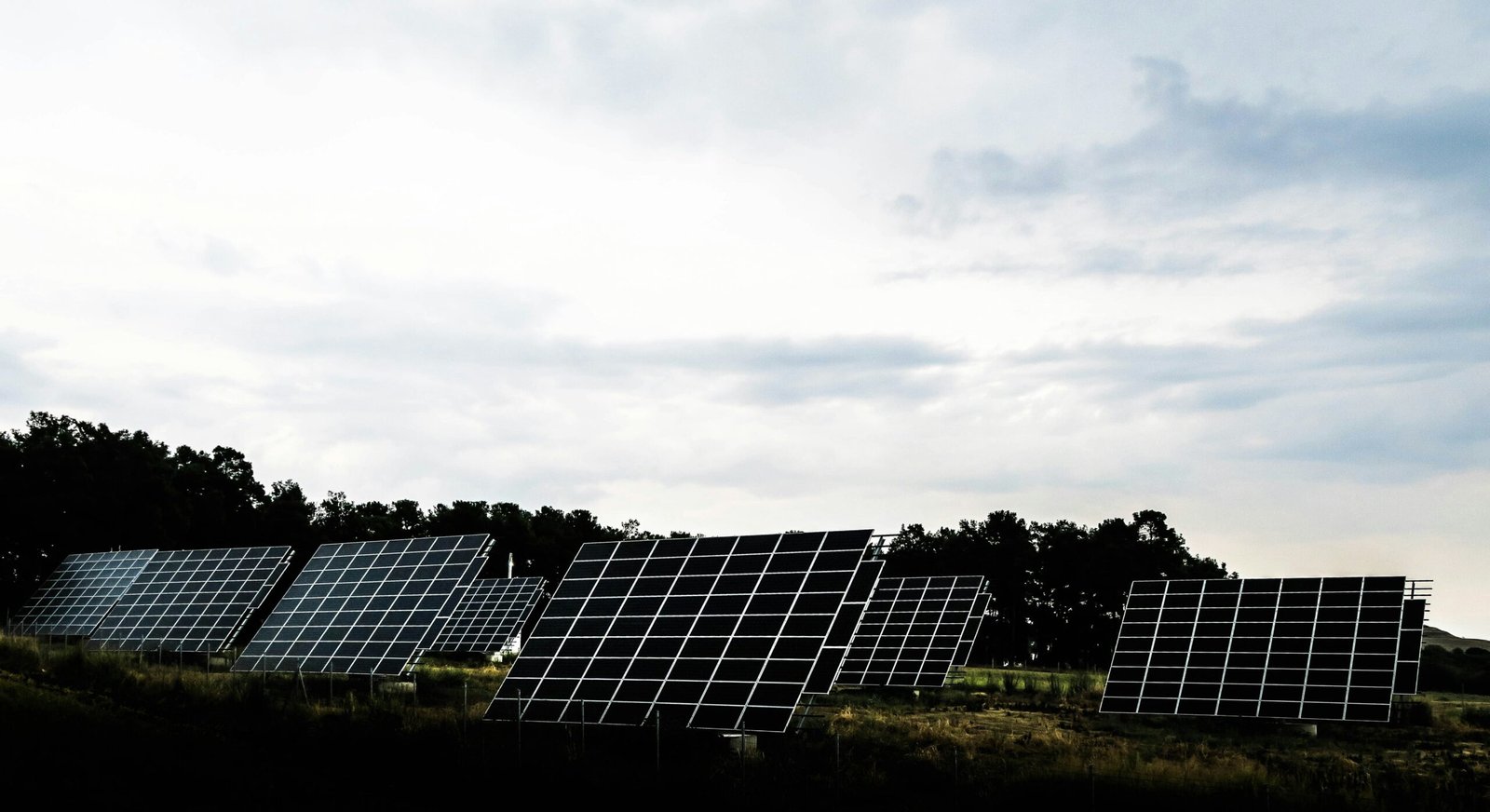Introduction to Solar Energy and Its Importance
Solar energy has emerged as a pivotal element in the global transition towards renewable energy sources. Harnessing the sun’s power through photovoltaic cells and solar thermal systems, solar energy serves as a clean, inexhaustible alternative to traditional fossil fuels. Understanding the basic principles of solar power generation is essential; photovoltaic cells convert sunlight directly into electricity, while solar thermal systems capture the sun’s heat for various applications, such as electricity production, water heating, and industrial processes.
One of the most significant environmental benefits of solar energy is its negligible greenhouse gas emissions once systems are operational. By reducing our dependency on fossil fuels, solar energy plays a crucial role in mitigating climate change and minimizing air pollution. Furthermore, solar installations have minimal water usage compared to conventional power plants, which is an essential consideration given the increasing global water scarcity.
The solar energy sector has experienced rapid growth in recent years, driven by technological advancements and decreasing costs. Innovations, such as the Taypro solar panel cleaning robot, have enhanced the efficiency and reliability of solar installations, making them more viable for widespread adoption. As technology continues to evolve, solar energy systems are becoming increasingly sophisticated, offering higher efficiency rates and longer lifespans. This growth is crucial to meeting the future energy demands, as the global population and industrial activities continue to expand.
With an increasing number of countries pledging to reduce their carbon footprints and adopt renewable energy targets, the potential for solar energy is immense. By integrating automated cleaning solutions like the Taypro solar panel cleaning robot, the maintenance and operational efficiency of solar panels can be significantly improved. These innovations not only enhance the performance of solar installations but also ensure that solar energy remains a cornerstone in the pursuit of sustainable, renewable energy solutions for the future.
Challenges in Solar Panel Maintenance
Solar panel maintenance is crucial for ensuring optimum performance and energy output. One of the primary challenges faced in this area is the accumulation of dust, debris, and other contaminants on the surface of the panels. These elements can create a layer that significantly reduces the panels’ ability to absorb sunlight, thereby diminishing their efficiency and overall energy production. This issue is particularly pronounced in regions with high levels of airborne particles or infrequent rainfall, which otherwise might help cleanse the panels naturally.
Regular cleaning of solar panels is essential to combat these accumulations. However, traditional manual cleaning methods present multiple drawbacks. For instance, manual cleaning requires considerable labor, which can lead to high operational costs, particularly for large-scale solar farms with thousands of panels. Furthermore, the manual handling and cleaning processes carry the risk of causing physical damage to the delicate surfaces of the panels. Such damage can impair their functionality and, in the worst cases, render them completely inoperative.
To address these challenges, innovative solutions like the Taypro solar panel cleaning robot have emerged. These automated technologies offer a more efficient and safer alternative to manual cleaning. By utilizing robotic systems, it becomes possible to achieve thorough and consistent cleaning without subjecting the panels to the risks associated with human error. Additionally, these robots can operate at regular intervals and during optimal conditions, ensuring continuous high performance of the solar panels.
In summary, the traditional approach to solar panel maintenance is fraught with challenges, from the buildup of contaminants to the costly and potentially damaging manual cleaning methods. Innovations like the Taypro solar panel cleaning robot represent a transformative step forward, offering a promising solution to improve the efficacy and safety of solar panel maintenance.
Emergence of Automated Cleaning Technologies
The rapid advancements in automated cleaning technologies have revolutionized the maintenance of solar panels, significantly enhancing their operational efficiency and longevity. As solar energy adoption continues to rise globally, the imperative to maintain solar panels at peak performance has never been greater. Among the forefront innovations are robotic cleaners, such as Taypro’s solar panel cleaning robot, which have set a new benchmark for efficiency and convenience.
Robotic cleaning systems have gained prominence due to their ability to perform routine maintenance tasks with minimal human intervention. These systems are equipped with advanced sensors and intelligent algorithms that enable them to navigate complex solar panel arrays, identify dirt and debris, and clean surfaces meticulously. Taypro, for instance, offers a cutting-edge solar panel cleaning robot designed to operate in diverse environmental conditions, ensuring optimal cleanliness and energy output.
In addition to robotic solutions, self-cleaning coatings represent another significant stride in automated cleaning technologies. These coatings employ nanotechnology to create hydrophobic or superhydrophilic surfaces that repel dust and dirt, effectively reducing the frequency and need for manual or robotic cleaning interventions. Such innovations not only extend the intervals between cleaning routines but also enhance the panels’ efficiency by ensuring they remain free from obstructions that can degrade their performance.
Moreover, there are integrated cleaning systems that combine various technologies to provide comprehensive maintenance solutions. These systems may include automated brushes, water sprayers, and drones equipped with cleaning apparatus, offering a multi-faceted approach to solar panel upkeep. The integration of IoT and AI in these systems further optimizes their operation, allowing for predictive maintenance and real-time monitoring.
One of the primary benefits of adopting these automated cleaning technologies is the substantial reduction in operational costs. By minimizing the need for manual labor and reducing downtime, these solutions ensure consistent energy production and lower maintenance expenses. Additionally, automated cleaning systems contribute to the longevity of solar panels by preventing the accumulation of dirt and debris, which can cause long-term damage if left unaddressed.
Overall, the emergence of automated cleaning technologies marks a pivotal development in the solar energy landscape. Innovations like Taypro’s solar panel cleaning robot and advanced self-cleaning coatings are transforming how solar installations are maintained, paving the way for more efficient and sustainable energy production.
Role of Artificial Intelligence in Solar Panel Cleaning
Artificial Intelligence (AI) is increasingly becoming a pivotal element in the advancement of solar panel cleaning technologies. The integration of AI with automated cleaning systems, such as the TayPro solar panel cleaning robot, has significantly enhanced their functionality, making them more efficient and reliable.
One of the fundamental ways AI contributes to this sector is through predictive maintenance. By utilizing advanced algorithms, AI can analyze vast amounts of data collected from sensors embedded in the cleaning robots and the solar panels themselves. This data includes information on panel temperature, energy output, and weather conditions. AI processes this information to predict when maintenance is needed, thereby preventing breakdowns and minimizing downtime.
Real-time monitoring is another critical aspect facilitated by AI. Solar panel cleaning robots equipped with AI can continuously monitor the cleanliness level of the panels. They can detect dirt accumulation patterns and environmental factors affecting the panels, such as dust storms or bird droppings. This real-time data allows the robots to make immediate adjustments and perform cleaning tasks more effectively, ensuring the panels operate at their optimal efficiency.
Furthermore, AI enables adaptive cleaning schedules. Traditional cleaning schedules might not account for varying levels of dirt accumulation or changing weather conditions. However, AI-driven robots like the TayPro solar panel cleaning robot can adapt their cleaning routines based on real-time data. This adaptive approach ensures that cleaning occurs only when necessary, conserving water and energy resources while maintaining maximum energy output from the solar panels.
AI’s role in solar panel cleaning extends beyond mere automation; it introduces a level of intelligence that optimizes the entire cleaning process. By leveraging predictive maintenance, real-time monitoring, and adaptive scheduling, AI-driven cleaning systems enhance the longevity and efficiency of solar panels, thereby contributing to the broader goal of sustainable energy production.
In examining the efficacy of automated solar panel cleaning technologies, one notable case study involves the deployment of the Taypro solar panel cleaning robot in a large-scale solar farm in Madhya Pradesh, India. The solar farm, sprawling over 1600 acres, had long struggled with efficiency losses due to the accumulation of dust and debris, a common issue in arid climates. Prior to the implementation of the Taypro system, maintenance teams manually cleaned the panels, a labor-intensive and costly process that resulted in significant downtime.
The introduction of the solar panel cleaning robot by Taypro revolutionized operations at the facility. Designed to navigate the expansive array with precision, the robot employs a combination of soft brushes and water jets to meticulously clean the surface of each panel. This automated solution not only addressed the challenge of maintaining cleanliness but also introduced consistency in cleaning processes, which manual methods often lacked.
Post-implementation data underscored the benefits of this technology. Energy output increased by an impressive 15%, highlighting the robot’s effectiveness in enhancing panel efficiency by ensuring optimal exposure to sunlight. Moreover, the reduction in labor costs for maintenance personnel was significant—estimated to be around 40% lower than previous figures. This dual benefit of increased energy production and reduced operational expenses established the Taypro solar panel cleaning robot as a pivotal innovation for the solar farm.
Another case study involves a medium-sized solar installation in Pokhran, Rajasthan, India, where the Taypro solution was similarly transformative. The region, known for its periodic dust storms, had historically seen substantial losses in solar energy production during such events. With the automated cleaning system, the farm experienced minimal disruptions as the robot could operate autonomously and frequently, mitigating the impact of dust accumulation. This led to a sustained energy output even during adverse conditions, further solidifying the case for automated cleaning technologies.
These real-world examples vividly illustrate the tangible benefits of integrating automated cleaning technologies like Taypro’s solar panel cleaning robot. The observable outcomes—marked increases in energy efficiency and considerable cost savings—demonstrate the pivotal role these innovations are set to play in advancing the solar energy industry.
Future Trends and Predictions
As the solar energy sector continues to expand, future trends indicate a significant evolution in automated cleaning technologies. One notable trend is the continuous advancement in robotics, particularly in solar panel cleaning robots. These robots are becoming increasingly sophisticated with enhanced mobility and precision, allowing them to navigate and clean large solar installations more effectively. By employing state-of-the-art design and engineering, these robots minimize physical wear on solar panels, thereby extending their operational life.
Artificial intelligence (AI) is another major technological driver anticipated to revolutionize the solar cleaning landscape. Integrating AI with robotic cleaners like the Taypro enables these systems to intelligently assess and adapt to varying conditions. For instance, predictive algorithms can determine the optimal cleaning schedules based on real-time weather data, panel soiling levels, and energy output patterns. Consequently, this approach minimizes unnecessary cleanings and maximizes energy efficiency, meeting the sector’s growing sustainability goals.
Furthermore, innovations in sensor technologies are expected to complement these advancements. Sensors strategically placed on solar panels and cleaning robots will provide critical data on panel conditions, environmental factors, and operational efficiency. This data can then be analyzed and used to fine-tune cleaning processes, ensuring that resources are utilized efficiently and that solar panels operate at peak efficiency.
The adoption of these technological innovations is projected to significantly enhance the broader adoption of solar energy. Enhanced cleaning efficiencies directly correlate with higher energy outputs, making solar energy a more viable and attractive option for both residential and commercial applications. Additionally, by embracing automated cleaning technologies, the solar industry is poised to lower operational costs and reduce dependency on water and manual labor, further promoting environmental sustainability.
Environmental and Economic Implications
The adoption of automated cleaning technologies for solar panels presents significant environmental and economic benefits. One of the most notable environmental advantages is the substantial reduction in water usage. Traditional cleaning methods often require large volumes of water, contributing to resource depletion in areas where water is already scarce. Automated cleaning systems, such as Taypro’s solar panel cleaning robot, are designed to minimize water consumption by utilizing efficient and innovative mechanisms. This not only conserves essential water resources but also reduces the overall environmental footprint of solar energy systems.
Furthermore, the use of automated cleaning technologies decreases the reliance on chemical cleaning agents. Chemical runoff from conventional cleaning processes can pose serious risks to surrounding ecosystems and biodiversity. By eliminating or significantly lowering the need for such chemicals, solar panel cleaning robots contribute to a healthier and more sustainable environment. The adoption of these technologies aligns well with the broader goals of promoting renewable energy as an eco-friendly alternative.
From an economic perspective, automated cleaning technologies offer compelling advantages as well. One of the primary economic benefits is the enhancement of long-term cost savings. Traditional cleaning methods not only incur higher labor costs but also require regular maintenance and replacement of cleaning materials. In contrast, automated systems like Taypro’s solar panel cleaning robot are designed for durability and low maintenance, translating into considerable cost reductions over time. This makes automated cleaning solutions a financially prudent investment for solar energy system owners.
Additionally, maintaining solar panels in peak condition through regular and efficient cleaning maximizes their energy output. Dirty panels can experience a significant drop in efficiency, reducing the overall return on investment for the solar energy system. By ensuring consistently clean panels, automated cleaning technologies help in achieving optimal energy production, thus enhancing the economic viability of solar energy projects.
Given these environmental and economic implications, the integration of automated cleaning technologies represents a forward-thinking approach that supports both sustainable practices and financial efficiency in the solar energy sector.
In conclusion, the evolution of automated cleaning technologies marks a significant milestone in the advancement of solar energy. The integration of innovative solutions like the Taypro solar panel cleaning robot not only enhances the efficiency of solar panels but also ensures their longevity and optimal performance. As the global reliance on renewable energy sources continues to rise, it becomes imperative to address the maintenance challenges that come with large-scale solar deployments.
The adoption of these cutting-edge cleaning robots represents a proactive approach to preserving the energy yield and investment returns of solar power systems. By automating the cleaning process, we reduce the manual labor involved and minimize the operational downtime, thus making solar energy a more viable and sustainable option. Furthermore, the precision and consistency offered by such innovations mitigate the risks of damage associated with traditional cleaning methods, thereby ensuring that the solar panels operate at their peak capacity.
For the sustained growth and efficiency of renewable energy sources, it is crucial to support continual research and development in automated cleaning technologies. Stakeholders across various sectors must recognize the potential benefits and prioritize investment in these advancements. Policymakers, in particular, have a pivotal role in fostering an environment conducive to innovation by implementing supportive regulations and providing incentives for businesses to adopt new technologies.
Businesses and consumers alike are encouraged to explore the possibilities presented by these innovative solutions. By integrating automated cleaning technologies into their operations, companies can not only enhance their sustainability efforts but also achieve significant cost savings over the long term. Meanwhile, consumers can contribute to a cleaner environment and a more sustainable future by advocating for and utilizing cleaner solar energy options.
The future of solar energy hinges on our ability to embrace and invest in technological advancements. By doing so, we can ensure that solar power remains a cornerstone of our renewable energy portfolio, driving us towards a more sustainable and energy-efficient world.





